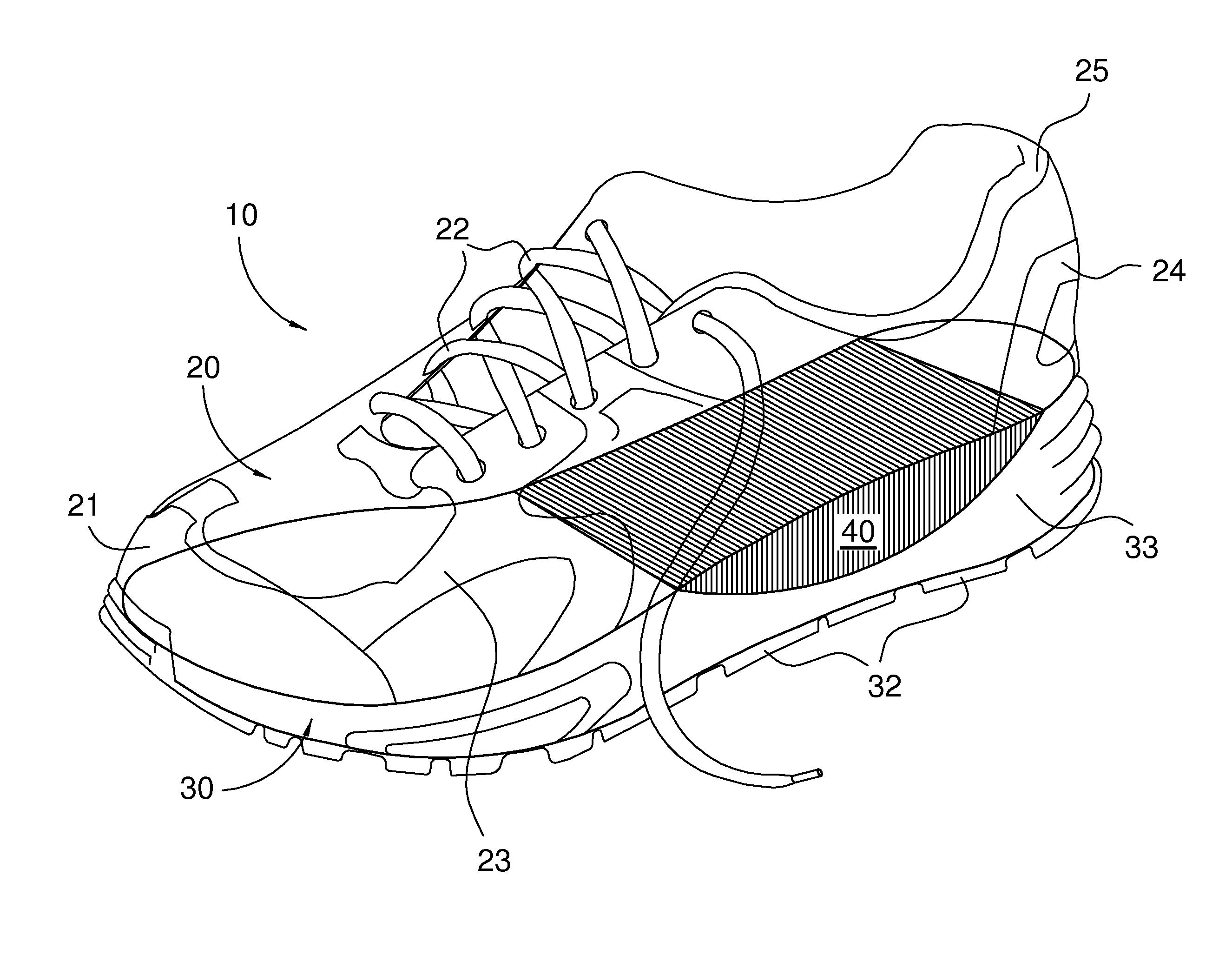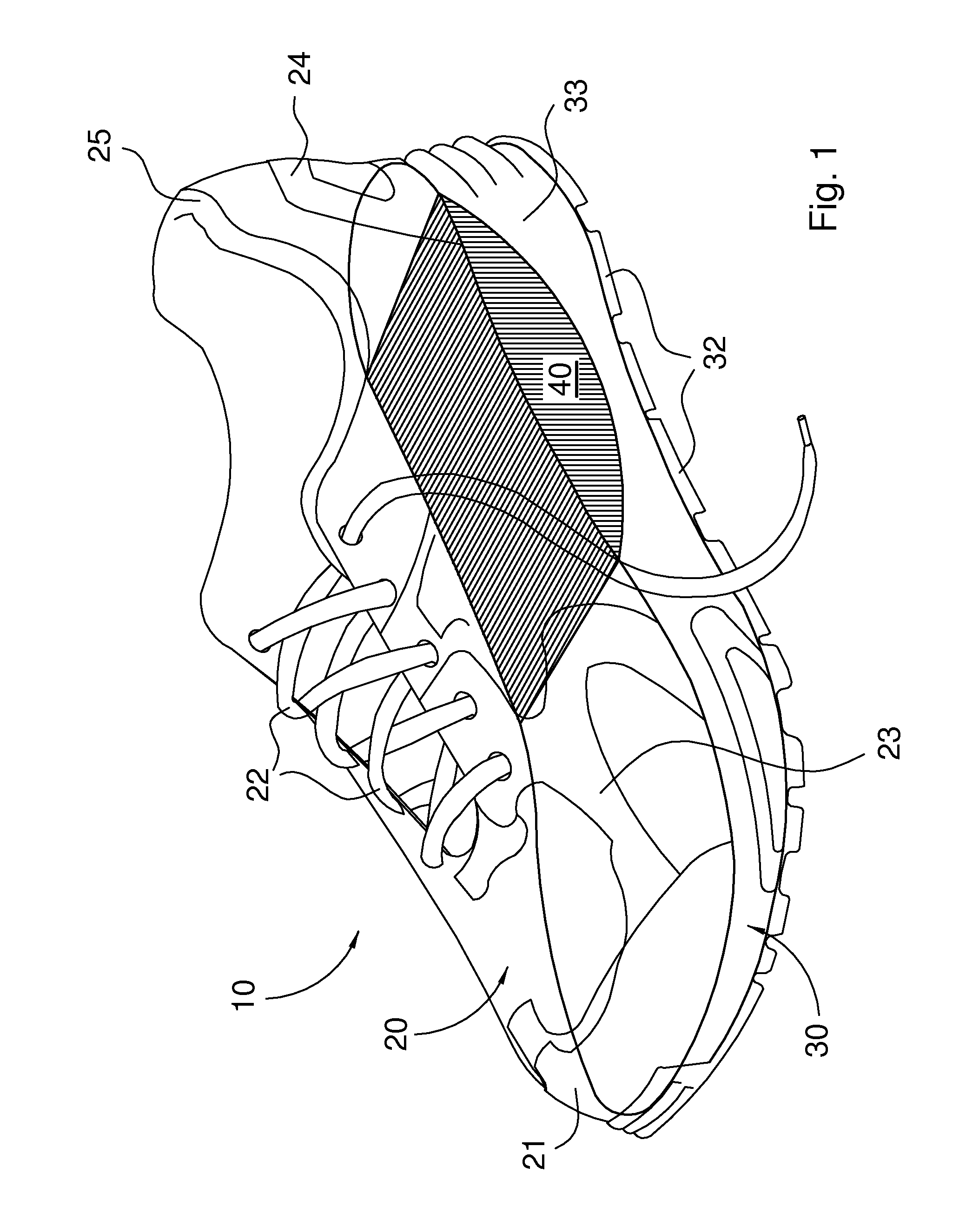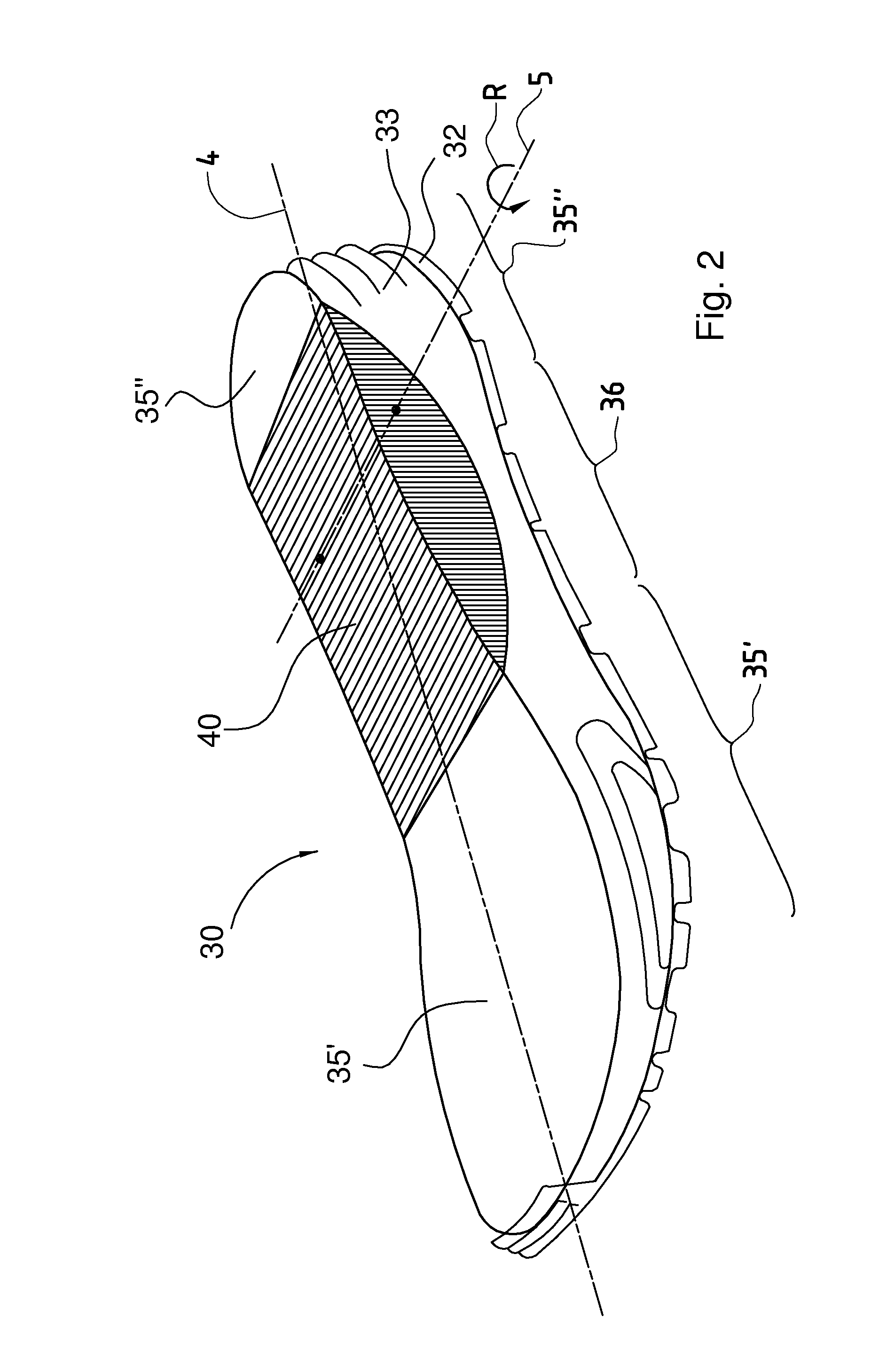Footwear for walking or running with rolling action
a technology of rolling action and shoes, applied in the field of shoes, can solve the problems of difficulty in walking and not without risk, impede the widespread acceptance of shoes in the market, and prior art mbt shoes are not attractive in appearance, and achieve the effect of greater walking stability
- Summary
- Abstract
- Description
- Claims
- Application Information
AI Technical Summary
Benefits of technology
Problems solved by technology
Method used
Image
Examples
Embodiment Construction
[0030]The shoe which inspired the present invention, the MBT shoe, is shown schematically in FIG. 8 in a lateral view. In the document PCT / CH00 / 00412, the MBT shoe is designated as “device for dynamic rolling walking”. It consists of an upper part 2 and the composite sole assembly 10 to 13. The number 10 represents the inner sole, which is solid, hard and elastic. Located beneath it is a lower sole, 11, which separates the midsole 10 from the undersole 12, which is soft and elastic. The sole bottom 13 is in contact with the surface on which the user walks.
[0031]As described previously, the footwear sole assembly of the present invention aims to permit a similar, or improved, rolling gait to that achieved by the prior art MBT shoe illustrated in FIG. 8, but in a more conventionally-shaped sole.
[0032]The attached drawings are for illustrative purposes only, and are provided in order to aid an understanding of the invention. The figures are not intended to convey a limitation or defini...
PUM
 Login to View More
Login to View More Abstract
Description
Claims
Application Information
 Login to View More
Login to View More - R&D
- Intellectual Property
- Life Sciences
- Materials
- Tech Scout
- Unparalleled Data Quality
- Higher Quality Content
- 60% Fewer Hallucinations
Browse by: Latest US Patents, China's latest patents, Technical Efficacy Thesaurus, Application Domain, Technology Topic, Popular Technical Reports.
© 2025 PatSnap. All rights reserved.Legal|Privacy policy|Modern Slavery Act Transparency Statement|Sitemap|About US| Contact US: help@patsnap.com



